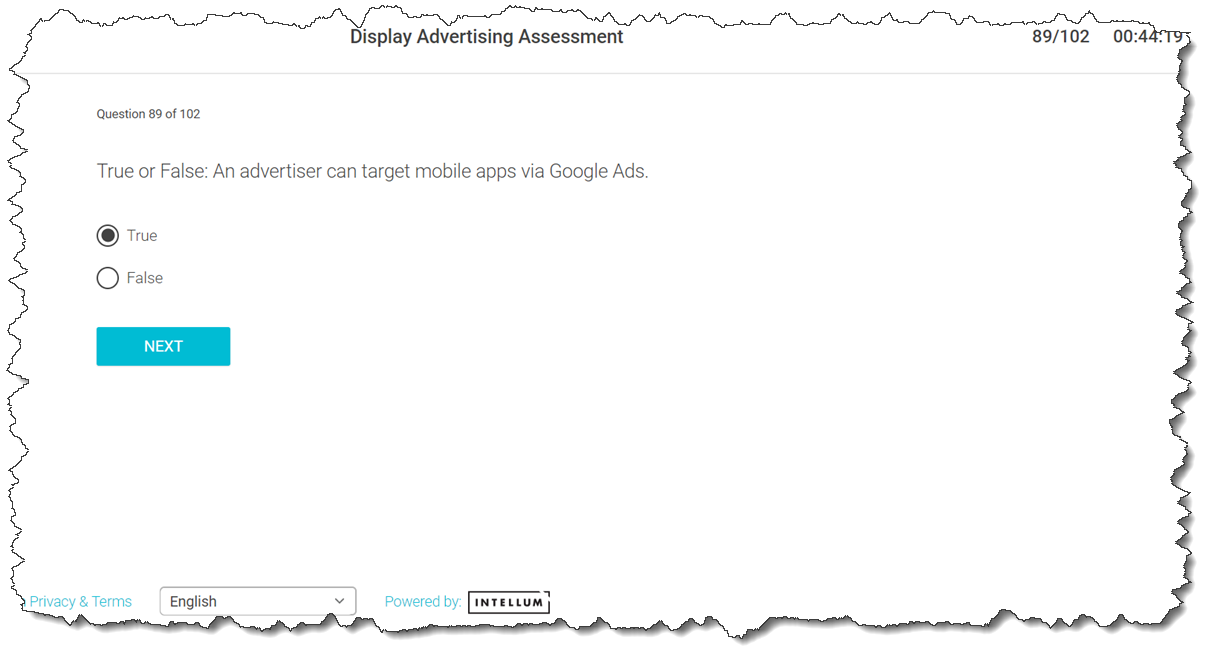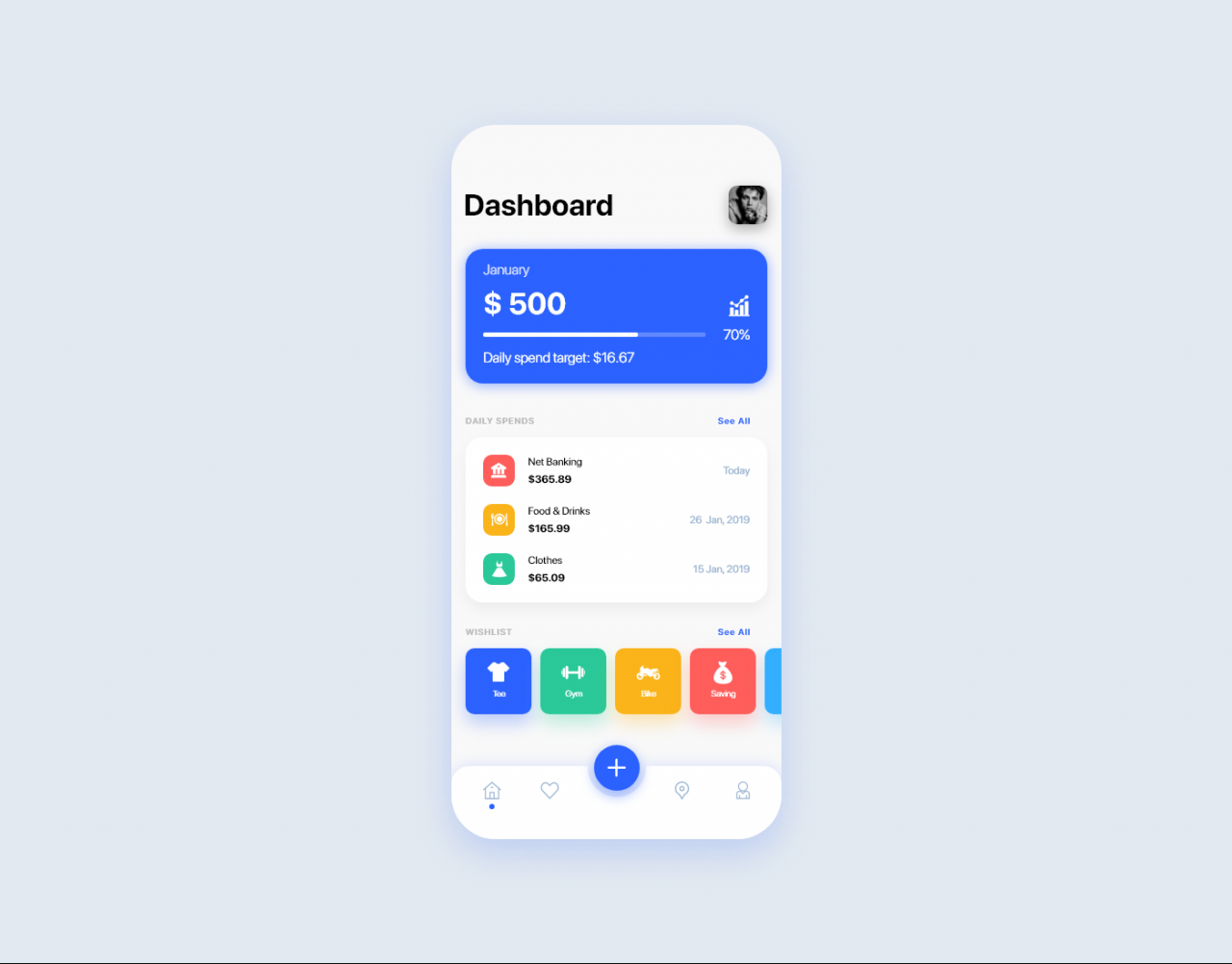An advertiser can target mobile apps – In the ever-evolving digital landscape, advertisers are turning their attention to the vast potential of mobile apps as a targeted and effective advertising platform. With the ability to reach specific audiences based on their interests, behaviors, and demographics, mobile app advertising offers a unique opportunity for businesses to connect with consumers in a highly personalized and impactful way.
This comprehensive guide will delve into the various methods advertisers can employ to target mobile apps, the strategies for identifying and segmenting specific audiences, and the importance of optimizing ad creative for maximum impact. We’ll also explore emerging trends and best practices to help advertisers maximize their mobile app advertising campaigns.
App-Based Advertising Methods
In the realm of mobile marketing, app-based advertising has emerged as a potent force, enabling advertisers to engage with targeted audiences within the immersive confines of mobile applications.
Advertisers employ a diverse array of methods to infiltrate the app ecosystem, each tailored to specific objectives and target demographics.
In-App Advertising Formats
The landscape of in-app advertising is a vibrant tapestry of formats, each vying for attention within the limited screen real estate of mobile devices.
- Banner Ads:Unobtrusive and ubiquitous, banner ads grace the upper or lower portions of the screen, offering a cost-effective entry point for advertisers.
- Interstitial Ads:Full-screen interludes that appear between app transitions, interstitial ads command undivided attention, making them ideal for high-impact messaging.
- Rewarded Ads:A symbiotic relationship between users and advertisers, rewarded ads offer in-game currency or other incentives in exchange for viewing an ad.
- Native Ads:Disguised as organic app content, native ads seamlessly blend into the app’s design, enhancing user experience while promoting products or services.
- Playable Ads:Interactive and immersive, playable ads allow users to engage with a game or experience before downloading, increasing conversion rates.
Effectiveness of In-App Advertising, An advertiser can target mobile apps
The effectiveness of in-app advertising hinges on a myriad of factors, including ad format, app genre, and target audience.
Studies have shown that rewarded ads consistently outperform other formats in terms of engagement and conversion rates, while native ads boast higher click-through rates due to their unobtrusive nature.
By understanding the nuances of app-based advertising and tailoring campaigns accordingly, advertisers can effectively reach their target audience and achieve their marketing objectives.
Audience Targeting

In the realm of mobile app advertising, advertisers wield a myriad of techniques to pinpoint their desired audience. They employ sophisticated algorithms that analyze user data, such as demographics, interests, and behaviors, to craft laser-focused campaigns that resonate with specific groups of individuals.
Segmentation Strategies
Advertisers segment their target audience based on a multitude of factors:
- Demographics:Age, gender, income, location, education level
- Interests:Hobbies, passions, activities
- Behaviors:Purchase history, app usage patterns, browsing habits
By understanding these attributes, advertisers can tailor their messaging and ad placements to appeal to the unique characteristics and preferences of each audience segment.
Example
Consider a fitness app that wants to target health-conscious individuals. They might segment their audience based on demographics (age: 25-45, gender: female), interests (fitness, nutrition), and behaviors (regular app usage, tracking workouts).
Advertisers can target mobile apps, making it easier to reach specific audiences. And if you’re looking to add an app to your LG Smart TV, we’ve got you covered. Check out our guide on adding an app to an lg smart tv and get started today.
With just a few simple steps, you’ll be able to enjoy your favorite apps on the big screen. Plus, advertisers can target mobile apps, ensuring your ads reach the right people.
App Categories and Targeting
The landscape of mobile apps is vast and diverse, encompassing a wide range of categories that cater to various user needs and interests. Understanding the nuances of these categories is crucial for advertisers seeking to effectively target their campaigns within the app ecosystem.
The suitability of an app category for advertiser targeting hinges on several factors, including the app’s functionality, user demographics, and engagement levels. Certain categories, such as gaming and social media, boast large and highly engaged user bases, making them attractive targets for advertisers looking to reach a broad audience.
App Category Analysis
Let’s delve into some of the key app categories and their relevance for advertiser targeting:
- Gaming:With its massive user base and high engagement rates, the gaming category offers advertisers a prime opportunity to connect with a large and passionate audience. Advertisers can target specific gaming genres or demographics to tailor their campaigns to the interests of their desired audience.
- Social Media:Social media apps are a hub for user interaction and content sharing. Advertisers can leverage these platforms to reach users based on their social connections, interests, and behaviors. Social media advertising enables highly targeted campaigns that can drive engagement and brand awareness.
- Shopping:E-commerce apps provide advertisers with direct access to consumers who are actively seeking products and services. Advertisers can target users based on their browsing history, purchase behavior, and demographics to deliver personalized and relevant ads.
- Utilities:Utility apps, such as weather, navigation, and productivity tools, offer a unique opportunity for advertisers to reach users in specific contexts and at opportune moments. By understanding the user’s needs and the context in which they are using the app, advertisers can deliver highly relevant and timely ads.
Factors Influencing Ad Performance
Beyond app category, there are several other factors that can influence the performance of ads within specific app categories:
- App Engagement:The level of user engagement within an app plays a significant role in ad performance. Apps with high engagement rates provide advertisers with a more receptive audience, leading to higher click-through rates and conversions.
- Ad Format:The choice of ad format can impact ad performance. Different ad formats, such as banner ads, interstitial ads, and rewarded videos, have varying levels of visibility and engagement. Advertisers should carefully consider the most appropriate ad format for their target audience and campaign goals.
- Ad Targeting:Precise targeting is essential for effective app advertising. Advertisers can leverage user data, such as demographics, interests, and behavioral patterns, to deliver ads that are highly relevant to the target audience. Effective targeting increases the likelihood of ad engagement and conversions.
One way an advertiser can target mobile apps is to add an app to Samsung Pass. With Samsung Pass, users can securely store their passwords and other sensitive information. Advertisers can then target these users with ads that are relevant to their interests.
For example, an advertiser could target users who have added a banking app to Samsung Pass with ads for financial products. Add an app to samsung pass is a great way for advertisers to reach a large audience of mobile users.
Retargeting and Remarketing

Retargeting and remarketing are powerful strategies that allow advertisers to reach users who have previously interacted with their ads or apps. These techniques are highly effective in driving conversions and building brand loyalty.
When it comes to mobile advertising, advertisers can target specific apps to reach their desired audience. This is a powerful way to reach users who are already engaged with a particular app or category of apps. For example, an advertiser could target users who have installed the add an app to chrome extension.
This would allow the advertiser to reach users who are interested in productivity and efficiency tools.
Retargeting involves displaying ads to users who have visited an advertiser’s website or mobile app. Remarketing, on the other hand, involves sending emails or push notifications to users who have previously engaged with an advertiser’s brand.
An advertiser can target mobile apps with laser-like precision, delivering ads that are relevant to users’ interests and behaviors. Even if your firewall or antivirus software, such as McAfee, is blocking an app, you can easily allow it through by following the steps outlined in this guide . With this control, advertisers can effectively reach their target audience and drive conversions.
Successful Retargeting Campaigns
One of the most successful retargeting campaigns was conducted by Amazon. The company used retargeting ads to remind users of products they had viewed on their website but had not yet purchased. This campaign resulted in a significant increase in sales.
An advertiser can target mobile apps that users download onto their phones or tablets. A mobile app, as defined , is an application that can be downloaded from an app store, such as the Apple App Store or the Google Play Store.
Advertisers can target mobile apps based on a variety of factors, such as the app’s category, the app’s audience, and the app’s usage data.
Another successful retargeting campaign was conducted by Airbnb. The company used retargeting ads to remind users of properties they had viewed on their website. This campaign resulted in a significant increase in bookings.
Best Practices for Retargeting and Remarketing
- Use a variety of ad formats.Retargeting and remarketing ads can be displayed in a variety of formats, including display ads, video ads, and social media ads. Use a mix of formats to reach your target audience.
- Target your audience carefully.Retargeting and remarketing ads should be targeted to users who are most likely to convert. Use data from your website or app to create custom audiences.
- Use relevant messaging.Your retargeting and remarketing ads should be relevant to the user’s previous interaction with your brand. For example, if a user viewed a product on your website, you could retarget them with an ad for that product.
- Track your results.It’s important to track the results of your retargeting and remarketing campaigns. This will help you to measure the effectiveness of your campaigns and make adjustments as needed.
Ad Creative Optimization

Optimizing ad creative for mobile app targeting is crucial for driving successful app install campaigns. With the limited screen space and attention span of mobile users, it’s essential to create visually appealing and persuasive ads that capture their attention and entice them to install your app.
Ad Copy
- Craft concise and compelling ad copy that highlights the key benefits and value proposition of your app.
- Use action-oriented language that encourages users to download the app, such as “Download Now” or “Install Today.”
- Consider using s relevant to your app to increase visibility in search results.
Visuals
- Utilize high-quality images or videos that showcase the app’s features and functionality.
- Keep visuals simple and uncluttered, focusing on the most important elements.
- Consider using eye-catching colors and graphics that align with your brand identity.
Call-to-Actions
- Include a clear and prominent call-to-action that directs users to the app store.
- Use strong verbs and action-oriented language, such as “Install Now” or “Get Started.”
- Place the call-to-action in a prominent location, such as the bottom of the ad or within the image.
Measurement and Analytics: An Advertiser Can Target Mobile Apps
Tracking the effectiveness of mobile app advertising campaigns is crucial for optimizing performance and maximizing ROI. Advertisers should monitor key metrics and utilize analytics tools to gain insights into ad performance.
Essential metrics to track include:
- App Installs and Downloads:Number of times an app is installed or downloaded after clicking on an ad.
- In-App Purchases:Revenue generated through purchases made within the app after clicking on an ad.
- Click-Through Rate (CTR):Percentage of users who click on an ad after viewing it.
- Conversion Rate:Percentage of users who take a desired action (e.g., install, purchase) after clicking on an ad.
- Cost per Install (CPI):Average cost of acquiring a new app install through advertising.
- Return on Investment (ROI):Ratio of revenue generated to the cost of advertising.
Analytics tools like Google Analytics, App Annie, and Adjust provide detailed insights into ad performance. These tools allow advertisers to track key metrics, analyze user behavior, and identify areas for improvement.
Privacy Considerations
Mobile app advertising raises privacy concerns due to the collection of user data, such as location, device information, and app usage patterns. Advertisers must comply with privacy laws and regulations to protect user data and avoid legal penalties.
To comply with privacy laws, advertisers should:
- Obtain user consent before collecting data.
- Limit data collection to what is necessary for advertising purposes.
- Securely store and protect user data.
- Provide users with access to their data and the ability to opt out of data collection.
- Comply with industry best practices and privacy frameworks.
Privacy Regulations
Various privacy regulations govern mobile app advertising, including:
- General Data Protection Regulation (GDPR) in the European Union
- California Consumer Privacy Act (CCPA) in California
- Health Insurance Portability and Accountability Act (HIPAA) in the United States
Advertisers must be aware of these regulations and ensure compliance to avoid legal consequences.
Emerging Trends
The mobile app advertising landscape is constantly evolving, with new trends emerging all the time. Some of the most important trends to watch in 2023 include personalized advertising, programmatic buying, and cross-device targeting.
These trends are having a significant impact on advertiser strategies. By embracing these trends, advertisers can reach their target audience more effectively and efficiently.
An advertiser can target mobile apps to reach specific audiences based on their interests, demographics, and behavior. Check out the 3.09 quiz there’s an app for that to learn more about how mobile apps are transforming the advertising landscape. By leveraging mobile apps, advertisers can deliver highly personalized and targeted messages that drive engagement and conversions.
Personalized Advertising
Personalized advertising is the practice of tailoring ads to the individual user. This can be done by using data such as the user’s demographics, interests, and browsing history. Personalized advertising is more effective than traditional advertising because it is more relevant to the user.
Targeting mobile apps can be a great way for advertisers to reach their desired audience. With the advent of smartphones, there are now a plethora of apps available, from social media platforms to games and productivity tools. This gives advertisers a wide range of options to choose from when targeting their campaigns.
For example, an advertiser looking to reach a younger audience might choose to target apps like Snapchat or TikTok. Alternatively, an advertiser looking to reach a more professional audience might choose to target apps like LinkedIn or Slack. With so many apps available, there is sure to be one that is a good fit for any advertiser’s target audience.
And with the help of mobile app advertising platforms, advertisers can easily target all apps on an iphone or any other specific app or group of apps.
- Personalized advertising can improve click-through rates by up to 20%.
- Personalized advertising can increase conversion rates by up to 10%.
- Personalized advertising can help advertisers build stronger relationships with their customers.
Programmatic Buying
Programmatic buying is the use of technology to automate the process of buying and selling advertising space. This process is more efficient and effective than traditional manual buying methods.
- Programmatic buying can save advertisers time and money.
- Programmatic buying can help advertisers reach their target audience more effectively.
- Programmatic buying can help advertisers track the results of their campaigns more accurately.
Cross-Device Targeting
Cross-device targeting is the practice of targeting ads to users across multiple devices. This is important because users often use multiple devices to access the internet.
- Cross-device targeting can help advertisers reach their target audience more effectively.
- Cross-device targeting can help advertisers track the results of their campaigns more accurately.
- Cross-device targeting can help advertisers build stronger relationships with their customers.
Case Studies and Examples
Mobile app advertising has proven to be an effective way to reach target audiences and drive results. Here are a few case studies that demonstrate the success of this advertising method:
Case Study 1: Airbnb
- Airbnb used mobile app advertising to increase bookings by 20%.
- They targeted users who had recently searched for travel-related terms.
- Their ads featured high-quality images and compelling copy that highlighted the benefits of using Airbnb.
Case Study 2: Uber
- Uber used mobile app advertising to increase ride requests by 15%.
- They targeted users who were in close proximity to Uber drivers.
- Their ads featured a clear call-to-action and a special offer for new users.
These case studies demonstrate the effectiveness of mobile app advertising. By carefully targeting their audience and using creative and compelling ads, these companies were able to achieve their desired results.
Wrap-Up
As mobile app usage continues to soar, advertisers who embrace the power of targeted mobile app advertising will be well-positioned to reach their desired audiences, drive engagement, and achieve their marketing goals. By understanding the nuances of this dynamic platform and implementing effective strategies, advertisers can harness the full potential of mobile app advertising to drive business growth and success.
General Inquiries
What are the key benefits of mobile app advertising?
Mobile app advertising offers several key benefits, including: targeted audience reach, personalized ad experiences, increased engagement, and measurable results.
How can advertisers identify and target specific audiences within mobile apps?
Advertisers can employ various techniques to identify and target specific audiences within mobile apps, such as demographic targeting, interest-based targeting, and behavioral targeting.
What are some effective strategies for optimizing ad creative for mobile app advertising?
To optimize ad creative for mobile app advertising, advertisers should focus on creating visually appealing and engaging ads, using clear and concise copy, and incorporating a strong call-to-action.